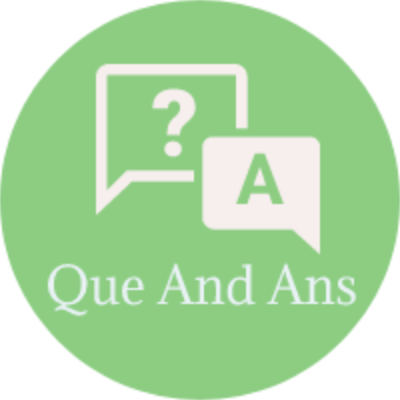Data Communication and Networking – Short Questions Answers Set-12
 Here in this section of Networking Basics Short Questions Answers,We have listed out some of the important Short Questions with Answers which will help students to answer it correctly in their University Written Exam.
Here in this section of Networking Basics Short Questions Answers,We have listed out some of the important Short Questions with Answers which will help students to answer it correctly in their University Written Exam.Lets have a look at below Lists of Short Descriptive type Questions with Answers
1.What do you mean by non persistent CSMA(carrier sense multiple access) ?
Ans: Here if no one else is sending the station begins doing so itself.However if the channel isalready in use,the station does’t continuously sense it rather it waits for a random period of timeand then repeats.It leads better channel utilization but longer delay.
2.What do you mean by p persistent CSMA(carrier sense multiple access) ?
Ans: It applies to slotted channels.when a station becomes ready to send,it senses the channel.Ifit is idle it transmits with a probability P,with a probability Q=P-1It defers until the next slot.If that slot is also idle,it either transmits or defers again withprobability P and Q.The process is repeated until either the frame has been transmitted or anotherstation begins transmitting.
3.What is FDDI?
Ans: It is high performance fiber optic token ring LAN running at 100Mbps over distance up1000 stations.FDDI access is limited by time.A FDDI cabling consist of two fiber rings.
i)one transmitting clockwiseii)one transmitting counterclockwise
4.What is Firewalls?
Ans: It is an electronic downbridge which is used to enhance the security of a network. It’sconfiguration has two components.
i)Two routersii)Application gatewaythe packets traveling through the LAN are inspected here and packets meeting certain criteria areforwarded and others are dropped.
5.What is Repeaters ?
Ans: A receiver receives a signal before it becomes too weak or corrupted,regenerates theoriginal bit pattern,and puts the refreshed copy back onto the link.It operates on phycal layer ofOSI model.
6.What is Bridges?
Ans: They divide large network into smaller components.They can relay frames between twooriginally separated LANs.They provide security through partitioning traffic.They operate onphycal and data link layer of OSI model.
7.What is Routers ?
Ans: Router relay packets among multiple interconnected networks.They receive packet fromone connected network and pass it to another network.They have access to network layeraddresses and certain software that enables them to determine which path is best for transmissionamong several paths.They operate on phycal,data link and network layer of OSI model.
8.What is Gateway ?
Ans: It is a protocol converter.A gateway can accept a packet formatted for one protocol andconvert it to a packet formatted for another protocol.It operates on all the seven layers of OSImodel.
9.What do you mean by Data Terminal Equipment(DTE) ?
Ans: It is any device that is source of or destination for binary digital data.At phycal layer it canbe a terminal computer. They generate or consume information.
10.What do you mean by Data Terminating Equipment (DCE) ?
Ans: Data circuit terminating equipment includes any functional unit that transmit or receivesdata in the form of an analog or digital signal through a network.DTE generates digital data andpasses them to a DCE ,the DCE converts the data to a form acceptable to the transmission mediaand sends the converted signal to another DCE on the network.
11.What do you mean by protocol stack ?
Ans: The list of protocols used by certain system ,one protocol per layer is called protocol stack.
12.What do you mean by peer ?
Ans: Entities comprising the corresponding layers on different machines are called peers.It maybe
• hardware device.
• processes
• human beingpeers communicate by using protocol.
13.What do you mean by broadcasting ?
Ans: Broadcast system allow addressing a packet to all destination by using a special code inaddress field.when packet is transmitted it is received and processed by every machine on thenetwork.
14.What are the advantages of broadcast network.
Ans:
• a single communication channel is shared by all computers.
• packets are transmitted and received by all the computer.
• address field is attached to whom it is intended.
• multicasting is used in network.
15.What do you mean by point to point network?
Ans: Point to point network consist of many connections between individual pair ofmachines.large networks are point to point.Routing algorithm plays an important in point topoint network.It uses stored ad forword technique.It is a packet switching network.
16.What are the design issue of layers ?
Ans: The design issue of layer are
• Addressing technique.ie source and destination address
• Types of communication
• Error control
• Order of message.
• Speed matching
• Multiplexing and demultiplexing.
17.What are the protocols in application layer ?
Ans: The protocols defined in application layer are
• TELNET
• FTP
• SMTP
• DNS
18.What are the protocols in transport layer ?
Ans: The protocols defined in transport layer are
• TCP
• UDP
19.Define TCP ?
Ans: It is connection oriented protocol.It consist byte streams oeiginating on one machine to bedelivered without error on any other machine in the network.while transmitting it fragments thestream to discrete messages and passes to interner layer.At the destination it reassembles themessages into output stream.
20.Define UDP ?
Ans: It is unreliable connectionless protocol.It is used for one-shot,client-server type,requesrreplyqueries and applications in which prompt delivery is required than accuracy.